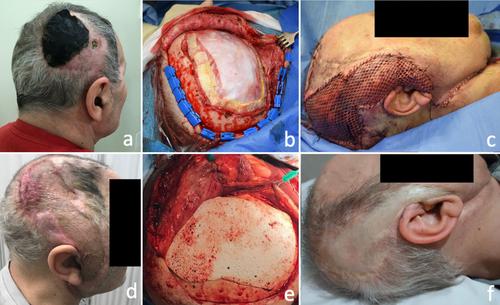Microsurgical Reconstruction of Complex Scalp Defects With Vastus Lateralis Free Flap
Abstract
Background
Scalp reconstruction is a challenging field for plastic surgeons. In case of large or complex defects, microsurgical-free flaps are usually required. Reconstructive failure can result in high morbidity and in some cases be life-threatening.
In this article, we present our experience in the reconstruction of complex scalp defects with the use of a vastus lateralis (VL) free flap.
Patients and Methods
From July 2013 to July 2023, we retrospectively analyzed patients who underwent soft tissue reconstruction of the scalp with a VL-free flap at the authors' institution. The patient's demographic, clinical and surgical characteristics, and postoperative complications were recorded and analyzed.
Results
Thirty patients were included. The mean age was 67.3 years. Seventeen patients were male, while 13 were female. In 56.7% of patients, defects resulted from cancer resection. In four patients, the defect was limited to the soft tissues while a multi-layer defect with bone and/or dura involvement was present in 26 patients. Soft tissue reconstruction was always achieved with a VL-free flap (n = 30). In 28 cases, a skin-grafted muscular flap was used. The most used recipient vessels were the superior thyroid vessels (n = 18). Complications occurred in six patients (20%): two cases of total flap loss and two cases of infection of the cranioplasty materials requiring their removal. In two cases patients died within 48 h. All patients were satisfied with the aesthetic and functional results at 6 months.
Conclusions
In the case of complex scalp defects, the gold standard is reconstruction through microsurgical flaps that provide well-vascularized tissue and allow to cover large defects, reducing the incidence of infections and ensuring good brain protection even without cranioplasty. In our experience, VL-free flap represents a valid option, providing a low donor site morbidity, the possibility of a two-team approach, and a low complication rate.


 求助内容:
求助内容: 应助结果提醒方式:
应助结果提醒方式:


